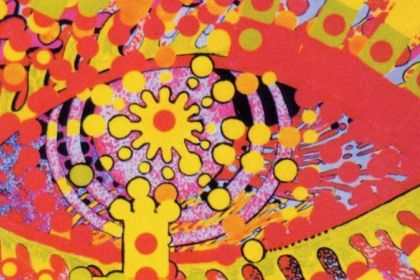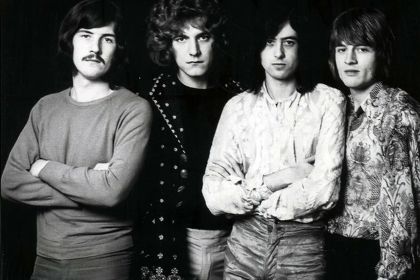SONGWRITER
In-A-Gadda-Da-Vida: Iron Butterfly's longest song anticipated metal genres

Iron Butterfly
Released in 1968 by the American psychedelic rock band Iron Butterfly, In-A-Gadda-Da-Vida remains to be one of the most significant tracks in the band's history. Moreover, the song is considered to be the starting point for many hard and metal genres thanks to the ferocious high-gain sound of its electric guitars distorted by pedal effects including Mosrite Fuzzrite and then passed through the special modded Vox Super Beatle amp.
According to one version, the enigmatic song title was conceived during a rehearsal when vocalist Doug Ingle sang the song lyrics, slurring the line "in the Garden of Eden" while being heavily inebriated, or under the effects of LSD, or maybe both.
Although initially written as a two-minute ballad, In-A-Gadda-Da-Vida eventually evolved into a much longer live performance, with the band considerably extending the jam session. At one of their early concerts in 1967, Jeff Beck reportedly witnessed the performance of the song extended to at least half an hour.
The song is rumored to have been recorded during a soundcheck by the engineer who taped the band's rehearsal setting up microphones and studio equipment to prepare their recording spaces with the producer still absent at the studio. After listening to the test recording, the producer, together with the band members, considered this version to be perfect and did not do other takes. Occupying the entire second side of the In-A-Gadda-Da-Vida album, this 17-minute track ensured Iron Butterfly's long-term commercial success, while its cut version, released as a single, did not garner as much attention.
Listen to In-A-Gadda-Da-Vida by Iron Butterfly:
As an incredibly well-structured track, In-A-Gadda-Da-Vida is capable of entrancing listeners for the entire duration to its unpredictable development, and at the same time, the minimalistic song arrangement of only four instruments and vocals makes it easy to take in.
The song opens with a short fugue-like organ intro followed by the groovy bass guitar figure—a technique known as a bass ostinato in classical music. During the first several minutes, the electric guitar predominantly provides the octave doubling to the bass line and then enters its iconic solo after the vocal line fades. The guitar is fuzzed and accentuated by a wah-wah pedal. Its solo develops against the background of the same bass guitar figure which is calmly echoed by the electric organ in this section. One of the first drum solos appears in the middle of the track, featuring a flanger modulation effect, and the polyphonic organ part is gradually incepted into the drumline. Finally, all sections of the song are repeated in reverse order, creating a kind of reprise.




The disc jockies back in those days like the long version because it gave them a 20 minute break away from the console.
The drummer in my old band demanded that we play this song just for the drum solo
Has anyone not heard the story of the long recording? It used to freak us out. The story of the couple fighting…the guy gets mad, drives away, gets in a car wreck, they think he’s dead, he’s put in a coffin, the scratching guitar is him scratching on the coffin lid…omg! But he gets out, the music gets elevated and he lives, then back to the vocals. Listen to it with that story in mind, it stands up the hair on your neck, incredible. The story we heard as kids is that this story was included in just a few albums to get it out there and I’ve always heard this classic that way. You can’t ever get it out of your head…